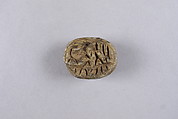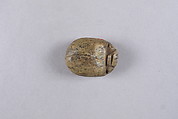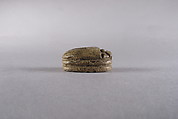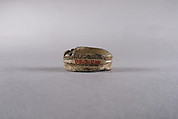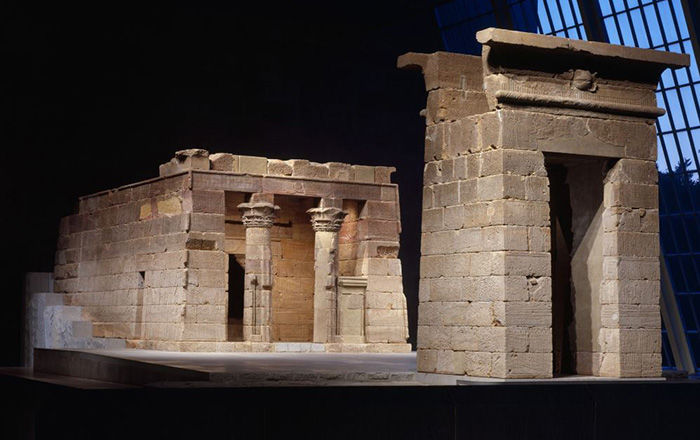Scarab with Reshef and Animals
Third Intermediate Period
A particular type of seal-amulet is found in archaeological contexts from the 10th century B.C. onwards. They are quite crudely and irregularly carved and the motifs on the underside show predominantly hunting scenes, with varied combinations of horned quadrupeds, lions, ostriches, and hunters. Based on the style of the incisions and on the large numbers that have surfaced in (northern) Egypt, but especially in the southern Levant, these seal-amulets are considered to be the result of a mass production. Their origin, however, is still under discussion. In the scholarly literature, they are labelled ‘Post-Ramesside mass-produced seal-amulets’ and are dated to the late 11th and 10th centuries B.C., that is, Dynasty 21 and early Dynasty 22 in Egypt, or the end of the Iron Age IB – early Iron Age II in the southern Levant.
This example shows an animal with long, straight horns, possibly an oryx, followed by a pair of lions. A human stands on the horned animal’s back. The figure most likely represents the god Reshef, a Canaanite deity who was introduced in Egypt during the New Kingdom (ca. 1295-1070 B.C.) and who is often represented standing on a horned animal.
This image cannot be enlarged, viewed at full screen, or downloaded.
This artwork is meant to be viewed from right to left. Scroll left to view more.
